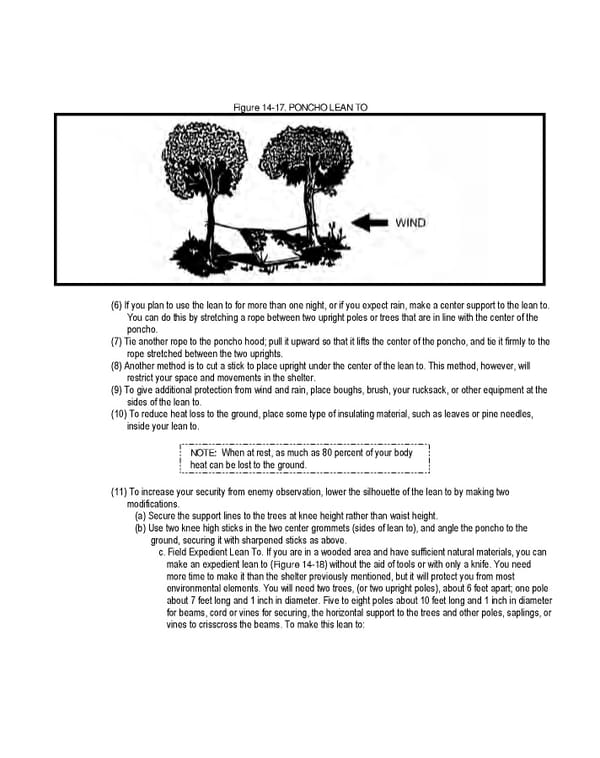Figure 14-17. PONCHO LEAN TO (6) If you plan to use the lean to for more than one night, or if you expect rain, make a center support to the lean to. You can do this by stretching a rope between two upright poles or trees that are in line with the center of the poncho. (7) Tie another rope to the poncho hood; pull it upward so that it lifts the center of the poncho, and tie it firmly to the rope stretched between the two uprights. (8) Another method is to cut a stick to place upright under the center of the lean to. This method, however, will restrict your space and movements in the shelter. (9) To give additional protection from wind and rain, place boughs, brush, your rucksack, or other equipment at the sides of the lean to. (10) To reduce heat loss to the ground, place some type of insulating material, such as leaves or pine needles, inside your lean to. NOTE: When at rest, as much as 80 percent of your body heat can be lost to the ground. (11) To increase your security from enemy observation, lower the silhouette of the lean to by making two modifications. (a) Secure the support lines to the trees at knee height rather than waist height. (b) Use two knee high sticks in the two center grommets (sides of lean to), and angle the poncho to the ground, securing it with sharpened sticks as above. c. Field Expedient Lean To. If you are in a wooded area and have sufficient natural materials, you can make an expedient lean to (Figure 14-18) without the aid of tools or with only a knife. You need more time to make it than the shelter previously mentioned, but it will protect you from most environmental elements. You will need two trees, (or two upright poles), about 6 feet apart; one pole about 7 feet long and 1 inch in diameter. Five to eight poles about 10 feet long and 1 inch in diameter for beams, cord or vines for securing, the horizontal support to the trees and other poles, saplings, or vines to crisscross the beams. To make this lean to:
 Ranger Handbook Page 267 Page 269
Ranger Handbook Page 267 Page 269